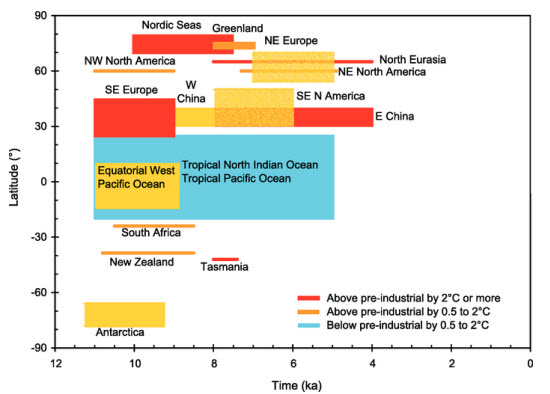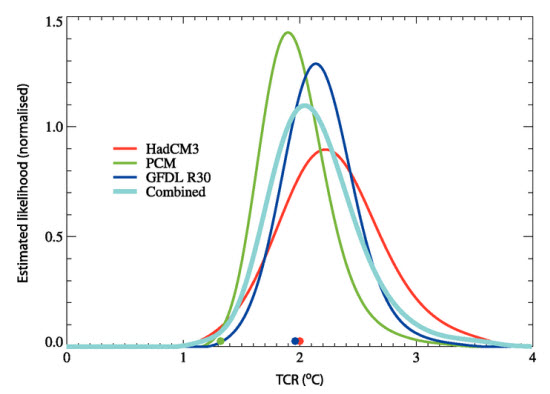
This is the second of three articles on the climate contrarian Matt Ridley. Part One is here.
In 2010, David MacKay wrote a letter to Matt Ridley in response to an op-ed article by Ridley published in The Times. MacKay’s letter and Ridley’s reply to it are both posted on the Ridley’s Rational Optimist blog. In this article, I am going to focus on Ridley’s reply, not because it is a particularly interesting or original addition to the skeptical canon, but because I believe it is revealing about the mindset of a climate contrarian.
David MacKay is a physicist but not a climate scientist. He is the author of the book Sustainable energy - without the hot air, which examines the daunting challenge that the United Kingdom faces in decarbonizing its energy supply. It’s a must-read, entertainingly written, easy-to-understand work, and can be downloaded for free. MacKay was appointed in 2009 to be Chief Scientist at Britain’s Department of Energy and Climate Change. His letter to Ridley raises points that will be familiar to regular readers of Skeptical Science; he cites recent evidence of climate change and discusses the analogue of the Paleocene-Eocene Thermal Maximum and the central question of the likely range of climate sensitivity. MacKay also mentions that his personal and professional contact with climate scientists bears no relation to the way they are often negatively depicted on contrarian blogs.
There are three main elements of Ridley’s reply that I want to focus on in this article but, first, I’ll simply list in point form some of the other arguments that comprised the rest of Ridley’s Gish Gallop, along with rebuttal links and brief comments.

Regional temperature variations from pre-industrial levels plotted against latitude and time before present. IPCC
Ridley alleges that scientists and bodies like the Royal Society (MacKay is a Fellow) have been complicit in not putting a brake on “politically-inspired extreme statements”.
As an example of an extreme statement, he offers this:
"Earth's climate can only be stabilized by bringing carbon dioxide emissions under control in the twenty-first century.’ That is the opening sentence of a paper in Nature Geoscience last month. It is shocking that it got past the editors and reviewers. After 4 billion years of climatic volatility, much of it not caused by CO2 but by orbital variations, solar cycles and so on, how on earth are we to `stabilise’ earth’s climate by adjusting just one forcing factor? I refuse to accept that the climate could ever be stabilised, let alone by adjusting one factor. That sentence has no place in a scientific journal."
The article in question, containing the supposed “extreme statement”, is a Nature Commentary article discussing relative contributions of short-lived atmospheric pollutants (black carbon, methane, ozone, nitrous oxide, etc.), aerosols, and longer-lived carbon dioxide. The paper is entirely concerned with the climate in the twenty-first century, so the authors’ supposed failing to address all aspects of climatic volatility over 4 billion years is not evidence of politically-inspired extremism but is instead utterly irrelevant. Moreover, the global climate had been relatively stable over a period of ~8,000 years, until humans began burning large quantities of fossil fuels.
Ridley refers to an article by Zeebe et al (2009) (ZZC 2010) Carbon dioxide forcing alone insufficient to explain Palaeocene–Eocene Thermal Maximum warming. He notes that these authors conclude that “CO2 did not even double during the PETM and that something other than carbon dioxide caused much of the heating.”
ZZC 2010 used ocean chemistry (carbonate dissolution accounting) to constrain estimates of the magnitude of the initial carbon pulse at the PETM to less than 3000 PgC (3000 billion tonnes of carbon). Assuming a baseline atmospheric concentration of CO2 of 1000 ppm, this would result in a concentration of 1700 ppm, less than a doubling. Using a maximum climate sensitivity of 4.5 yields a temperature increase of less than 3.5°C, far less than the estimated range of 5-9°C for the PETM. Zeebe et al conclude that unknown “feedbacks and/or forcings other than atmospheric CO2 caused a major portion of the PETM warming”.
Two points are worth noting:
It is also perhaps worth recalling (from Part 1) that the ocean chemistry that constrains the size of the PETM release in ZZC 2010 was derided in The Rational Optimist as: “Ocean acidification looks suspiciously like a back-up plan by the environmental groups in case the climate fails to warm: another try at condemning fossil fuels.” But it is a concept that is apparently safe enough to rely upon if you think it bolsters your argument in another area. (Mark Lynas has recently debated Ridley on ocean acidification, and the UK Ocean Acidification Research Programme provided a briefing note.)
In response to MacKay, Ridley claims:
“You say scientists know how big the uncertainties are and that the failure to ensure that uncertainties are reported has contributed to the problem. I agree and I wish that the science establishment had paid this issue more attention. They allowed and encouraged their spokesmen to peddle the very opposite impression.”
Later he quotes again from the Penner et al (2010) paper mentioned previously:
"It is at present impossible to accurately determine climate sensitivity (defined as the equilibrium warming in response to a doubling of atmospheric carbon dioxide concentrations) from past records, partly because carbon dioxide and short-lived species have increased together over the industrial era. Warming over the past 100 years is consistent with high climate sensitivity to atmospheric carbon dioxide combined with a large cooling effect from short-lived aerosol pollutants, but it could equally be attributed to a low climate sensitivity coupled with a small effect from aerosols. These two possibilities lead to very different projections for future climate change."
This expression of uncertainty from the science establishment rather undercuts Ridley’s argument that there is a systemic failure to communicate uncertainty. Ridley also states:
"I do know this though: the IPCC’s estimates of the sensitivity are utterly worthless because they all – all – assume net positive feedback. You are quite right that we do not know that clouds have negative feedback for sure, but there is good evidence that they probably do, and just 2% change in the albedo of cloudiness could reverse all CO2’s marginal effect."
He “knows” that the IPCC estimates are “utterly worthless”; there’s not much equivocation there. It's important to note that the IPCC does not "assume" a net positive feedback; rather, this is the result generated by every single climate model. And while the cloud feedback could hypothetically offset all positive feedbacks, there is no indication that it actually will.
Elsewhere in the post, Ridley says he has “no idea” what the climate sensitivity range is but then says: “It could be 1C or lower, it could be 3C, but I think it very unlikely from the latest data that it is going to be as high as 4.5C.” But he neglects to point us to a reference for the “latest data”. Perhaps he is referring to recent global temperature measurements, but without considering the thermal inertia of the deep oceans, as Lindzen and Monckton have done. The IPCC’s transient climate sensitivity, defined as the non-equilibrium global temperature change achieved quickly during an idealized CO2 doubling scenario, is exactly the same range as Ridley’s.

Probability distributions of transient climate response (TCR) from a doubling of CO2. IPCC AR4
"Whereas the existing uncertainty in the science is sometimes put forward as an excuse to continue business as usual, such an approach invariably suffers from viewing this uncertainty going in one direction only: making the problem seem smaller. What about the other direction? What if the risks actually increase faster (in the latter direction) than they decrease (in the former direction)?"
"Why, sometimes I've believed as many as six impossible things before breakfast."
-The White Queen in Lewis Carroll's Through the Looking-Glass
I have presented arguments and examples of Matt Ridley reading into scientific papers only those conclusions that bolster his skepticism about the potential seriousness of climate change. Meanwhile, he ignores the context and conclusions in those same papers that offer his viewpoint no support at all. Also, he quotes blog scientists and other non-specialists as if their opinions were authoritative. It’s hard to imagine in his writings on evolution and genetics that he would ever quote a climate scientist, say, Roy Spencer, as a useful guide to The Evolution Crisis.
In his earlier books, Ridley mostly avoided the pitfall of the Naturalistic Fallacy, in which a natural is is confused with an ethical ought. Many other people who have written about evolution and the nature/nurture debate have not been as fastidious, drawing unwarranted political, ethical, or even spiritual lessons from biology. In contrast, when it comes to climate, Ridley seems to fall prey to a kind of reverse naturalistic fallacy, in which his political and ethical worldviews influence the particular scientific results he chooses to accept as reliable.
[Edited November 3rd, 2011, updated and added some links]
Part 3 will look at Ridley’s business record to see how Rational Optimism played out in the world of banking. It will compare the completeness and accuracy of a report that he published with the IPCC reports that he so scorns.
Posted by Andy Skuce on Sunday, 7 August, 2011
 |
The Skeptical Science website by Skeptical Science is licensed under a Creative Commons Attribution 3.0 Unported License. |